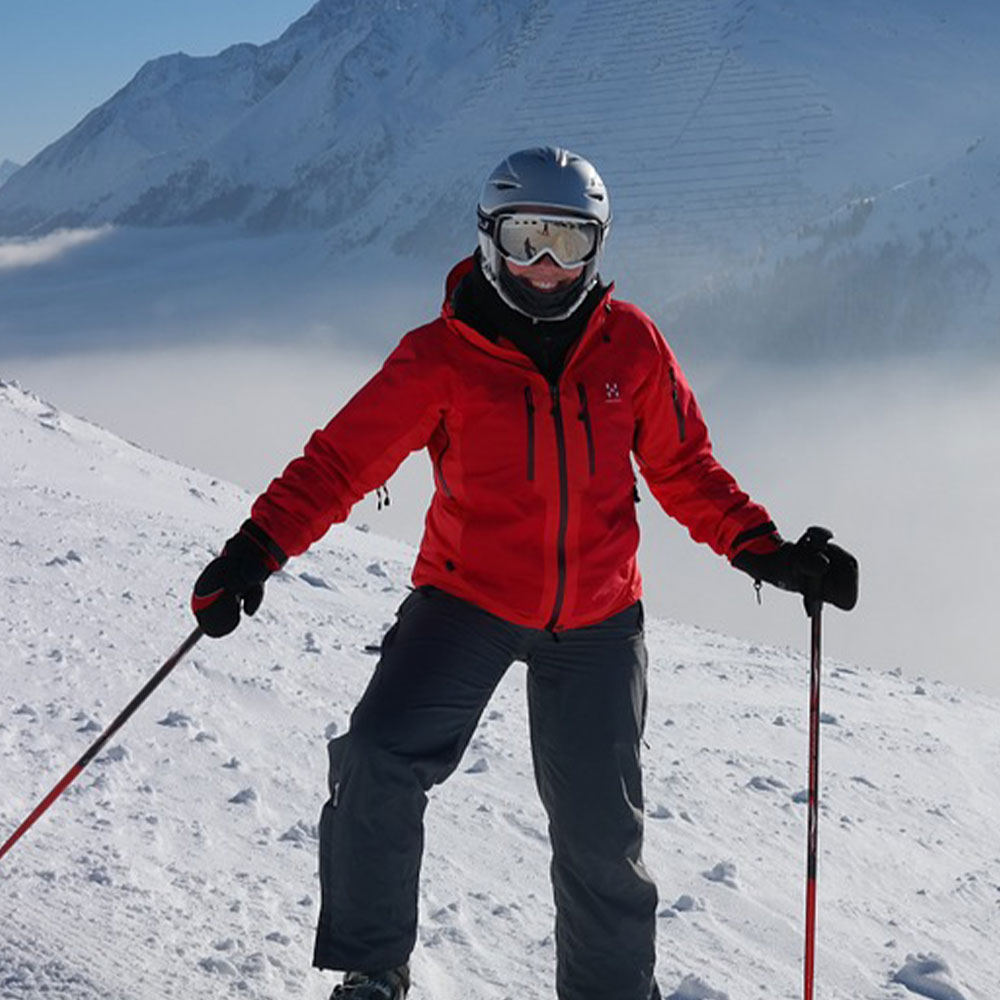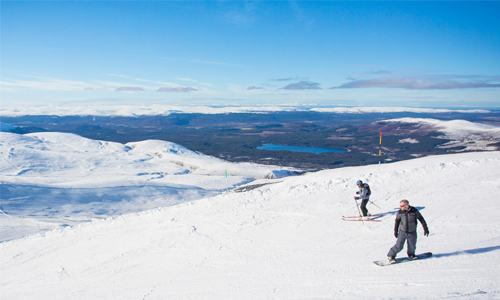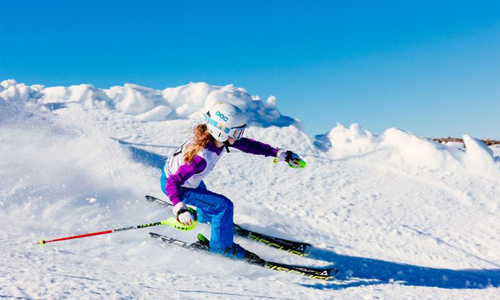Base Layers to Keep Yourself Warm During Skiing
Author

A keen runner, skier and nuts about cycling. Karl lives in Cumbria, where he loves encouraging his two children to follow in his outdoor lifestyle. Whilst out and about keeping active, Karl keeps a diary and shares it with Outdoor Look.
 While planning for snow sport adventure trips, we hardly think about the base layers that are essential to be worn underneath your ski suit. Rather, most of us, especially the ones who are beginners, believe in spending more on accessories like gloves, glares, face masks etc.
While planning for snow sport adventure trips, we hardly think about the base layers that are essential to be worn underneath your ski suit. Rather, most of us, especially the ones who are beginners, believe in spending more on accessories like gloves, glares, face masks etc.
I have come across many skiers who put the blame on their base layers for feeling the chills up in the snow covered mountains. Most of us forget that the key to a successful skiing experience is keeping yourself as warm as possible. Keeping up with the temperatures in the mountains is not child’s play. One needs to ensure that the quality of the base layers you own is exceptional. This directly implies that you should divert your spending on buying superior quality base layers that might cost a bit of money. This is the best way to save yourself from all the hoopla up in the mountains.
Necessity of Owning Warm Layers
It is quite clear that areas which experience snowfall tend to have more moisture in the air. Hence, wearing wet clothing can be a direct call to death. Cold can easily seep into our bodies and successfully suck out all heat from the body.
Remember your mother telling you to change your clothes when you come back home after a gruelling football game? Sweating and wet clothing can affect your health tragically. It is always advisable to change into dry clothing as soon as your clothes are drenched in water or sweat. The sweat that sticks to your body can give you chills while you ski down the slopes. With passing years skiing experts have eventually found out that a base layer underneath the fleece and jacket can do wonders in such cold circumstances.
The thermals, as these base layers are called, have taken centre stage and are definitely taken into consideration by all skiing experts and professionals. Known to have properties that can keep you dry while you engage in hardcore skiing sessions, these are moisture-wicking in nature, along with having the tendency to soak water away from the skin up into outer layers.
Fabric that does the Trick
 Capilene is considered the ideal fabric for baselayers. A close friend who is a passionate skier chooses Capilene for most of his skiing trips. He once told me that this material does not leave behind any dampness, but on the other hand keeps the entire body warm. However, he warned me that heavy skiing sessions with the legendary Capilene on would mean ending your day on the slopes with a lot of stink. Yes, it might smell, hence carrying more than just one is recommended. Night time laundry is another option you can look into.
Capilene is considered the ideal fabric for baselayers. A close friend who is a passionate skier chooses Capilene for most of his skiing trips. He once told me that this material does not leave behind any dampness, but on the other hand keeps the entire body warm. However, he warned me that heavy skiing sessions with the legendary Capilene on would mean ending your day on the slopes with a lot of stink. Yes, it might smell, hence carrying more than just one is recommended. Night time laundry is another option you can look into.
Other Kinds of Fabrics
Merino Wool: People looking for alternatives can always choose a woollen layer as a baselayer, if nothing else. Made from renewable fabric, Merino wool is in trend and is also loved by most skiers, for it does not smell.
Cashmere: This is usually handcrafted in Scotland. Extremely light, this can be handwashed too using lukewarm water. Odour resistant, this might be expensive, but it is worth it. This luxurious fabric is extraordinary.
Bamboo Base Layer: You heard it right! You have not made a mistake! There are base layers that have a bamboo construction. That's correct! Eco-friendly, this material easily takes away all the moisture, and is anti-bacterial and anti-static.
LIFA: This distinct technology is a blend of merino wool and exceptional LIFA fibre, making it ideal for insulation and wicking moisture. This is for all those looking for a non-itchy alternative to wool.
Recycled: This sounds a little out of the box. Recycled base layers easily store the wasted energy and recycle it back into muscles. Not only is it helpful in facilitating better circulation of blood, but this also improves tissue oxygen by 20%.
Yak: Never imagined such things could be, right? But Yak hair is used for crafting base layers. If a base layer is made from 100% yak hair, then you are assured a soft, warm, light, and breathable fabric. Like the animal uses it to insulate against cold weathers, similarly this is highly recommended.
That’s about it! Remember, it pays to have and wear best and optimum quality gear. Skiing, unlike in earlier times, is a safe sport to try. Modern day base layer apparel ensures you a comfortable skiing experience! Carry this in your rucksack and plunge into some skiing fun up in the snow-capped mountains.
Author

A keen runner, skier and nuts about cycling. Karl lives in Cumbria, where he loves encouraging his two children to follow in his outdoor lifestyle. Whilst out and about keeping active, Karl keeps a diary and shares it with Outdoor Look.
Categories
- Sport (28)
- Product Reviews (3)
- Team Outdoor Look (7)
- Mike Wild (2)
- Mike Payton (2)
- Suse Hammond-Pears (3)
- Snowboarding (12)
- Latest Offers (105)
- Shop Talk (1)
- Competitions (7)
- Walking (413)
- Lifestyle Fashion (8)
- Travel (86)
- Kit Guides (176)
- Workwear Clothing (6)
- Safety Workwear (4)
- Health/Fitness (289)
- Skiing (91)
- Great Outdoors (1316)
- Cycling (92)
- January 2025
- December 2024
- November 2024
- October 2024
- September 2024
- August 2024
- July 2024
- June 2024
- May 2024
- April 2024
- March 2024
- February 2024
- January 2024
- December 2023
- November 2023
- October 2023
- September 2023
- August 2023
- July 2023
- June 2023
- May 2023
- April 2023
- March 2023
- February 2023
- January 2023
- December 2022
- November 2022
- October 2022
- September 2022
- August 2022
- July 2022
- June 2022
- May 2022
- April 2022
- March 2022
- February 2022
- January 2022
- December 2021
- November 2021
- October 2021
- September 2021
- August 2021
- July 2021
- June 2021
- May 2021
- April 2021
- March 2021
- February 2021
- January 2021
- December 2020
- November 2020
- October 2020
- September 2020
- August 2020
- July 2020
- June 2020
- May 2020
- April 2020
- March 2020
- February 2020
- January 2020
- December 2019
- November 2019
- October 2019
- September 2019
- August 2019
- July 2019
- June 2019
- May 2019
- April 2019
- March 2019
- February 2019
- January 2019
- December 2018
- November 2018
- October 2018
- September 2018
- August 2018
- July 2018
- June 2018
- May 2018
- April 2018
- March 2018
- February 2018
- January 2018
- December 2017
- November 2017
- October 2017
- September 2017
- August 2017
- July 2017
- June 2017
- May 2017
- April 2017
- March 2017
- February 2017
- January 2017
- December 2016
- November 2016
- October 2016
- September 2016
- August 2016
- July 2016
- June 2016
- May 2016
- April 2016
- March 2016
- February 2016
- January 2016
- December 2015
- November 2015
- October 2015
- September 2015
- August 2015
- July 2015
- June 2015
- May 2015
- April 2015
- March 2015
- February 2015
- January 2015
- December 2014
- November 2014
- October 2014
- September 2014
- August 2014
- July 2014
- June 2014
- May 2014
- April 2014
- March 2014
- February 2014
- January 2014
- December 2013
- November 2013
- October 2013
- September 2013
- August 2013
- July 2013
- June 2013
- May 2013
- April 2013
- March 2013
- February 2013
- January 2013
- December 2012
- November 2012
- October 2012
- September 2012
- August 2012
- July 2012
- June 2012
- May 2012
- April 2012
- March 2012
- February 2012
- January 2012
- December 2011
- November 2011
- October 2011
- September 2011
- August 2011
- May 2010
- April 2010
- March 2010
- February 2010
- January 2010
- November 2009
- October 2009
- September 2009
Submit a Comment